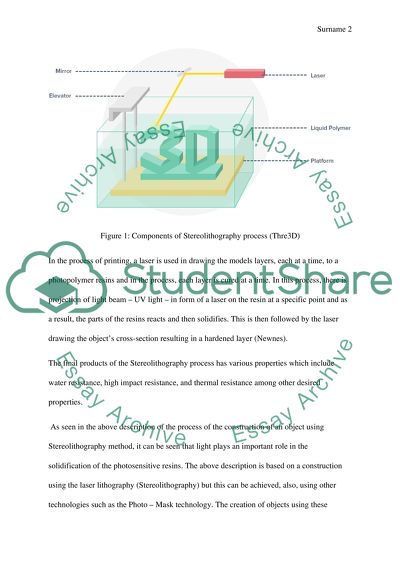Cite this document
(“Stereolithography and photo polymerisation Essay”, n.d.)
Stereolithography and photo polymerisation Essay. Retrieved from https://studentshare.org/chemistry/1652647-stereolithography-and-photo-polymerisation
Stereolithography and photo polymerisation Essay. Retrieved from https://studentshare.org/chemistry/1652647-stereolithography-and-photo-polymerisation
(Stereolithography and Photo Polymerisation Essay)
Stereolithography and Photo Polymerisation Essay. https://studentshare.org/chemistry/1652647-stereolithography-and-photo-polymerisation.
Stereolithography and Photo Polymerisation Essay. https://studentshare.org/chemistry/1652647-stereolithography-and-photo-polymerisation.
“Stereolithography and Photo Polymerisation Essay”, n.d. https://studentshare.org/chemistry/1652647-stereolithography-and-photo-polymerisation.


